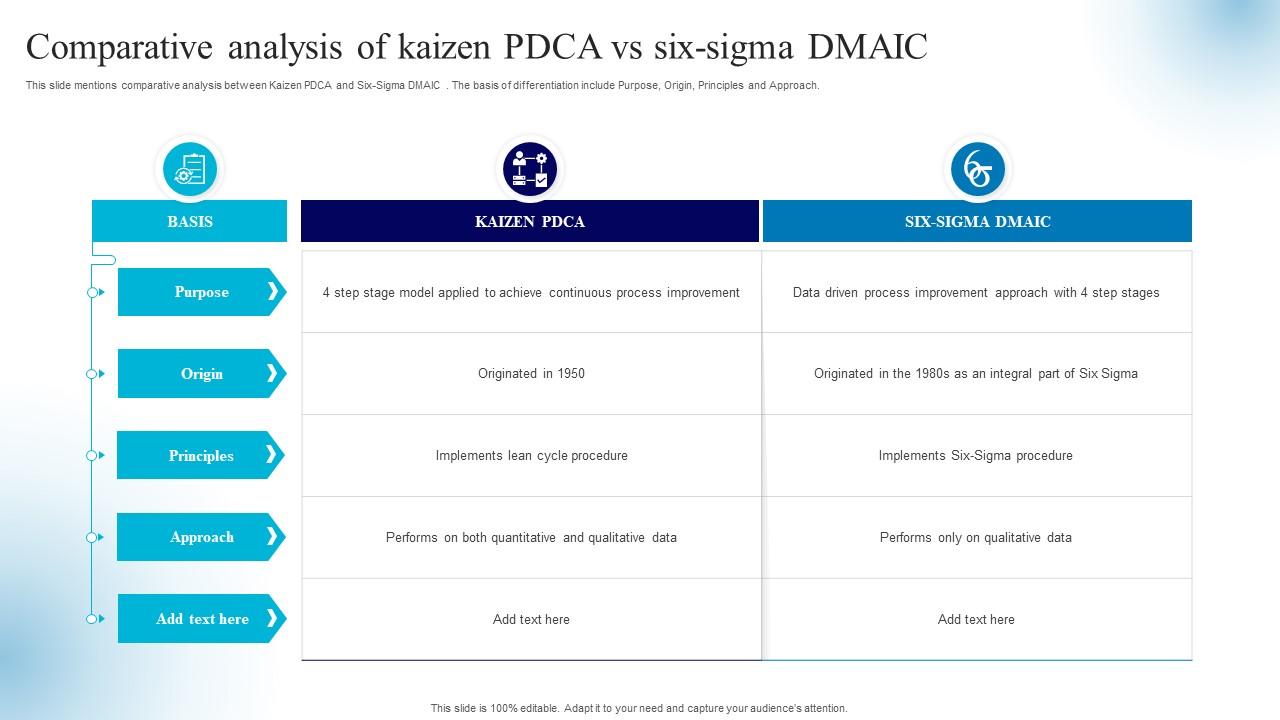
In conclusion, Six Sigma is a strategy for improving the quality of manufacturing processes by lowering the number of defects found. Six Sigma helps to improve the quality and standards of production and products. It integrates with Lean manufacturing to create Lean Six Sigma, which reduces lean waste during the production process. It also provides opportunities for process improvement and working towards innovation in the products.
Measure
Clearly, Six Sigma can generate positive results for an organization, but, since it is limited in scope, it should not be applied universally to any business, process, or discipline. The structured nature of Six Sigma can sometimes limit flexibility in responding to rapidly changing business environments. Organisations need to strike a balance between standardisation and the ability to adapt to evolving market conditions. This analytical rigor is essential to achieving and maintaining optimum quality levels. Use Six Sigma in cases where your process has too many variations and has not been delivering what the client needs.
Overemphasis on Quantitative Methods
Master black belts will train both green belts and black belts to lead teams and projects, and be their coaches. Six Sigma master black belts must be also highly skilled and knowledgeable about their area of expertise. Green belt certification accounts receivable vs accounts payable could mean that sometimes you are a team leader with so-called green projects, which are lesser in scope or priority than black belt projects. Green belters can also be part of a black project team, often in data analysis.
What is Cost of Poor Quality (COPQ)?
Optimized processes provide superior quality management capabilities, seamlessly producing consistent, high-quality products. In other words, there is greater consistency in the quality of what is produced. As a result of Six Sigma, Microsoft says it improved the availability of its servers, boosted productivity, and increased customer satisfaction. Large amounts of data were collected on a daily and weekly basis from various servers. The incidents were prioritized based on how severely the defects affected the business and the company’s underlying services.
While some saw it as a revolutionary strategy that would significantly improve efficiency, others dismissed it as a complicated process that wouldn’t lead to improved profits. In conclusion, Six Sigma remains a powerful methodology for organizations striving to enhance their operational excellence and consistently deliver high-quality products and services. By diligently adhering to its principles and leveraging data-driven strategies, businesses can significantly minimize defects, improve customer satisfaction, and achieve sustainable competitive advantages.
What Is Six Sigma Methodology? Processes & Principles Guide
- It’s where you think about not only fixing a problem but looking for the reason it happened and preventing it from happening ever again.
- The six sigma was reflective based on the metric that a product or process will only have 3.4 defects in a million opportunities.
- It establishes a culture of ongoing organisational improvement, where processes are regularly reviewed, analysed, and optimised.
- This ultimately translates to increased profits and reduced operational costs in an organization.
- As we saw, an organization that relies too heavily on Six Sigma may lose sight of key business functions such as innovation and growth.
This was the initiative of Ex-CEO of General Electric Jack Welch – an author and chemical engineer. The motive behind the implementation of six sigma in General Electric was the realization of drawbacks in systems of the company by Jack Welch. He was of the opinion that the company needs a complete overhaul to eliminate its waste build-up and to cope up with the poor governance issues. Six Sigma, with its layered processes and heavy reliance on data, can sometimes convert straightforward problems into complex challenges. The methodologies can, on occasion, lead teams down rabbit holes, focusing on micro-issues while missing the bigger picture. Instead of simplifying processes, it could add layers of unnecessary complications, causing frustration and delays.
Six Sigma certification programs confer belt rankings similar to those in the martial arts, ranging from white belt to black belt. The five phases of the Six Sigma method, known as DMAIC, are defining, measuring, analyzing, improving, and controlling. It requires a sizable upfront cost to implement and train employees on the methodology of Six Sigma and its execution. Here, you might begin to analyze new processes or modifications to your current existing process.
By focusing on statistical methods and rigorous measurements, organizations can identify and rectify errors and variations in their processes, leading to improved efficiency and cost savings. Statistical analysis is essential, enabling you to make decisions based on data rather than assumptions. Six Sigma refers to a data-driven approach used by companies to upgrade their business processes. The method uses a five-step methodology to eliminate defects at all stages within a company. Six Sigma defines defects as anything that is not within customer expectations. The goal is to apply a measurement-based approach that focuses on identifying and improving defects.

Six Sigma is still very relevant to help manage improvement and streamline the overall business process, especially if you want to cut down on waste, avoid problems and reduce defects. Shrinking variables in your process and rationalizing deliverables has yet to go out of style. It is great for when you have problems that are not very clear, or where you have projects whose goals are only vaguely defined. It’s also a useful method for when you are completely facing a total unknown in your approach. Finally, it’s appropriate if you need to make some improvements fast or on a budget.
While it might work wonders for a manufacturing unit aiming to reduce defects, it might not offer the same value for a creative agency or a niche startup. The methodology, in its essence, is designed for specific industries and business sizes. Forcing it onto an incompatible business model might not only be ineffective but potentially detrimental. Six Sigma has become a widely used quality-improvement methodology in both the private and public sectors.
